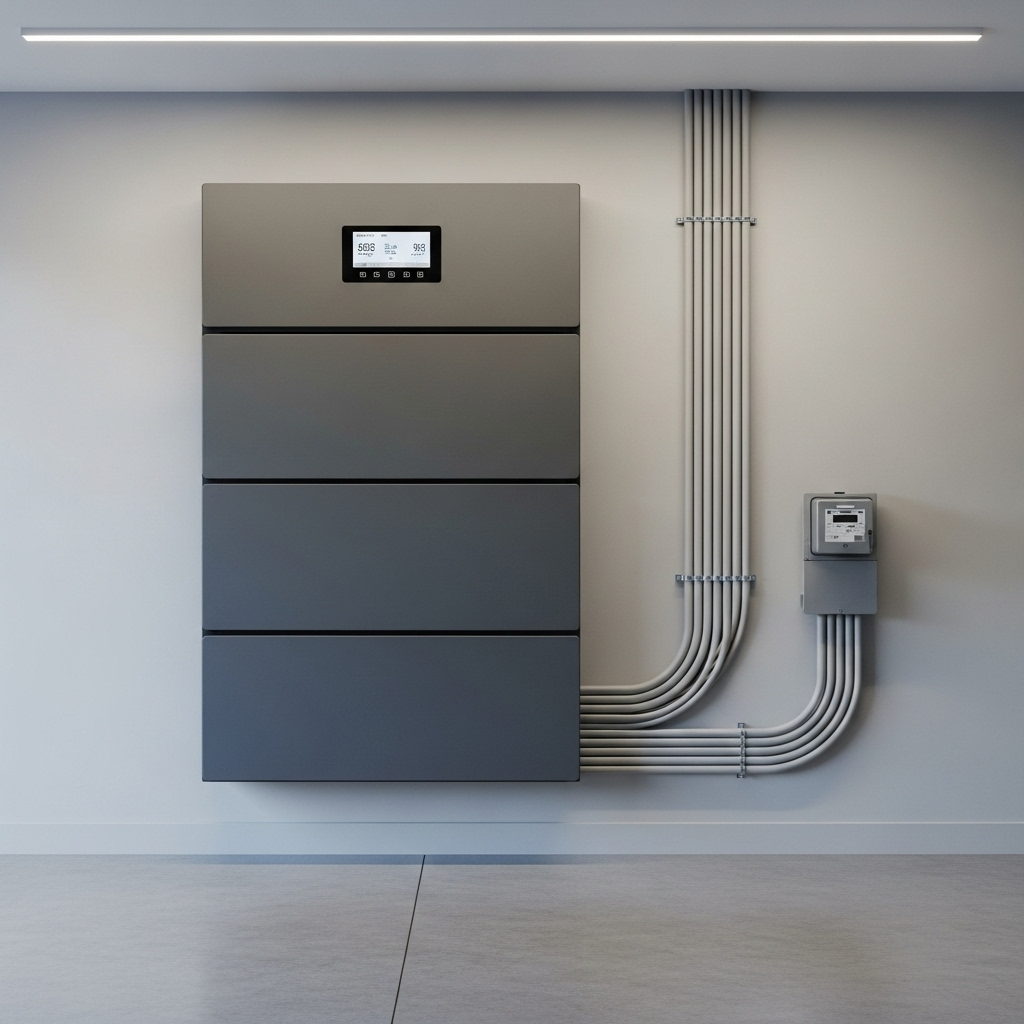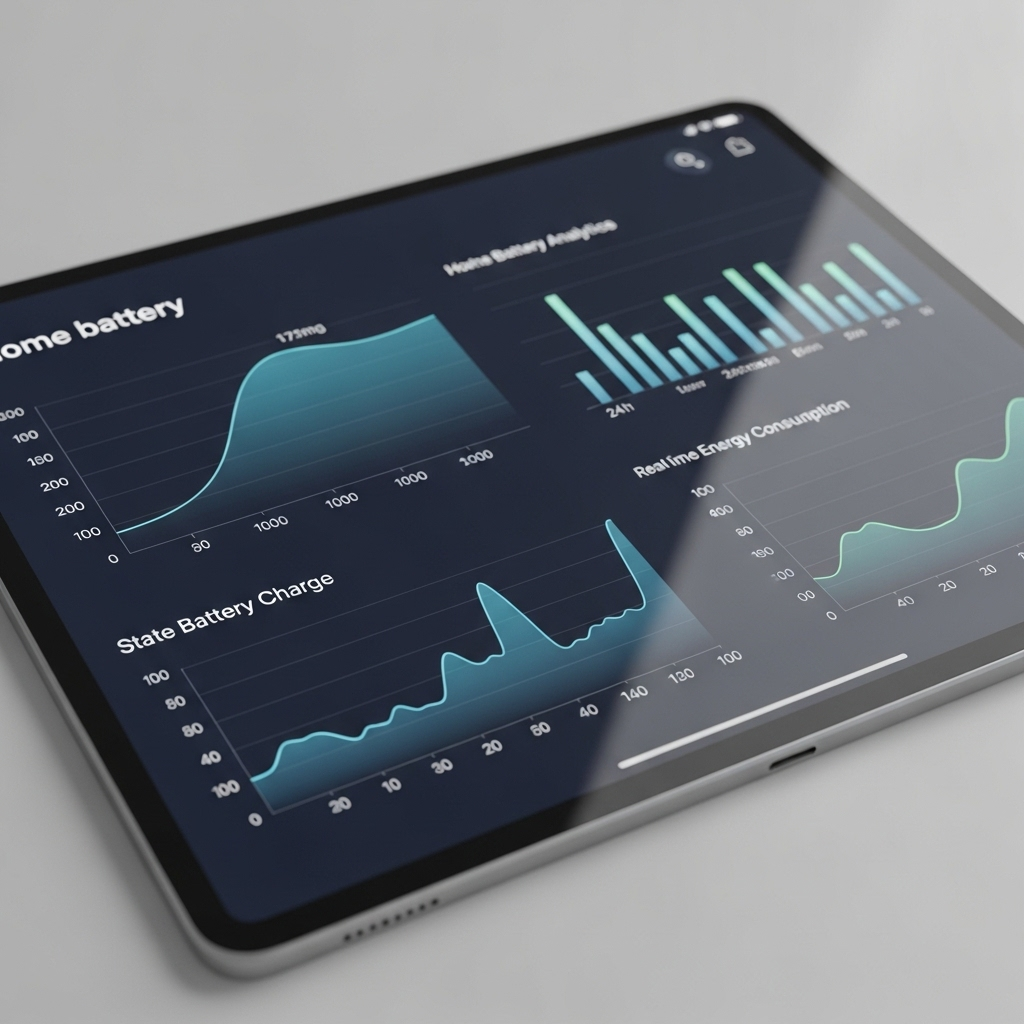Owning a home energy storage system is a significant step toward achieving energy independence. This powerful technology stores solar energy or off-peak grid power, giving you control over your electricity. But like any important home investment, it requires proper care to deliver its best performance safely and reliably for years to come. Many homeowners find the idea of maintenance intimidating, but it doesn't have to be. This guide provides a straightforward Homeowner Maintenance Checklist designed to protect your system and your peace of mind.
You will learn how to perform simple visual checks, monitor your system's health through data, and implement essential safety protocols. Following a routine helps maximize your investment, ensuring you have dependable power when you need it most.
Understanding Your Home Battery System
Before you can maintain your system, it helps to know its key parts and what they do. A home energy storage system (ESS) is more than just a battery; it's an integrated solution designed to work seamlessly together.
The Battery: Your Energy Heart
The battery is the core of your system, responsible for storing electrical energy. Modern systems increasingly rely on Lithium Iron Phosphate (LiFePO4) batteries. This chemistry is known for its excellent safety profile, long lifespan, and high efficiency, making it a reliable choice for residential applications. Unlike older battery technologies that required more hands-on work, LiFePO4 is remarkably low-maintenance. The differences in upkeep and potential risks between battery types are significant, a topic explored further in VRLA vs LiFePO4: Different Checklists, Different Risks.
The Inverter: The Brain of the Operation
The solar inverter is the manager of your energy system. It converts the direct current (DC) electricity stored in your batteries or generated by your solar panels into alternating current (AC) electricity that your home appliances can use. It also houses the software and monitoring tools that give you insights into your system's performance, making it a critical component for both operation and maintenance.
Balance of System (BOS): The Supporting Cast
This category includes all the other components that make your system work: wiring, breakers, mounts, and safety disconnects. While they may seem minor, their condition is vital for the overall safety and efficiency of your ESS. Regular visual inspections of these parts are a key element of any battery maintenance routine.
Your Routine Maintenance Schedule: From Monthly to Annually
Consistency is the foundation of effective maintenance. By creating a simple, repeatable schedule, you can catch potential issues early and ensure your system operates at peak efficiency. The right frequency for checks is important; you can learn more about finding the right balance in our article on Weekly vs Quarterly: Right Cadence for Home ESS Checks.
Monthly Checks: A Quick Visual Inspection
Once a month, take a few minutes to look over your system. This simple habit can prevent small problems from becoming bigger ones. For a more detailed routine, you can use our guide, Stop Guessing: Use This Monthly ESS Maintenance Routine.
- Visual Scan: Look for any accumulation of dust, debris, or signs of pests around the battery and inverter units. Ensure that all ventilation ports are clear and unobstructed to allow for proper cooling.
- Listen for Changes: Pay attention to the sounds your system makes during normal operation. Note any new or unusual buzzing, humming, or clicking noises.
- Check Connections: Visually inspect cables and connections to ensure they are secure and show no signs of corrosion or damage. Do not touch or attempt to tighten any electrical connections yourself.
- Clear the Area: Make sure the space around your ESS is clean, dry, and free of flammable materials or clutter. A minimum clearance of three feet is often recommended.
Quarterly Checks: Performance and Data Review
Every three months, dive a little deeper by reviewing your system's performance data. Most modern systems come with a monitoring app or web portal that provides a wealth of information. These tools are essential for tracking your system's health, as explained in Tools and Apps to Track ESS Health, Warnings, and Warranty.
- Review Performance Data: Look at your energy production, consumption, and the battery's state of charge (SoC) history. Are the patterns consistent? An unexpected drop in performance could signal an issue.
- Check for Firmware Updates: Manufacturers periodically release software updates to improve performance, add features, or enhance safety. Check your app or the manufacturer's website for any available updates and follow the instructions for installation.
- System Self-Test: If your system includes a self-test function, run it to check for any internal error codes or alerts.
This data-driven approach not only ensures reliability but can also translate into real savings. You can learn more about how performance data impacts your wallet in Data-Backed Home ESS Upkeep: Tasks That Save kWh and Cash. For a deeper understanding of key metrics like Levelized Cost of Storage (LCOS) and how they reflect your return on investment, you can explore this comprehensive guide to solar storage performance.
Annual Professional Inspection
While DIY checks are valuable, they don't replace a thorough inspection by a qualified technician. An annual or bi-annual professional check-up is highly recommended to address the more technical aspects of your system. This is often a requirement to keep your warranty valid, a topic covered in Protect Your Warranty: Manufacturer-Aligned Battery Checks.
During a professional inspection, a technician will typically:
- Check and torque all electrical connections to manufacturer specifications.
- Perform a capacity test on the battery to assess its health.
- Clean internal components of the inverter and fans.
- Verify that all safety features and disconnects are functioning correctly.
Battery Operation and Safety: A Non-Negotiable Priority
A home energy storage system is a powerful electrical appliance, and its safe operation is paramount. Understanding the basic principles of battery safety will protect both your family and your investment. The entire system, from the battery cells to the installation, should comply with established safety standards like UL 9540 to minimize risks.
The Do's and Don'ts of Battery Handling
Following simple safety rules is the most effective way to prevent accidents. For a complete list of safety recommendations, refer to What Should Be on My Home Backup Battery Safety Checklist?.
| Do | Don't |
|---|---|
| Keep the area around the unit clean and clear. | Store flammable or combustible materials nearby. |
| Follow all manufacturer guidelines and instructions. | Attempt to open or service the battery or inverter yourself. |
| Monitor your system's performance regularly. | Ignore any warning lights, alarms, or error messages. |
| Ensure you have a working smoke detector nearby. | Block ventilation openings on the units. |
Understanding System Alerts and Warnings
Your system's monitoring software will alert you to potential issues, such as high temperatures, low voltage, or communication errors. When you receive an alert, the first step is to consult your user manual to understand what it means. Often, a simple system reset can resolve minor glitches. However, persistent alarms are a sign that you should contact your installer or the manufacturer for support. Ignoring these warnings can lead to reduced performance or costly damage, as highlighted in 9 Costly Home Battery Maintenance Mistakes to Avoid This Year.
Creating a Fire-Safe Environment
Proper installation is the first line of defense against fire risk. The area where your battery is installed should be well-ventilated to dissipate heat. It's also critical to ensure the unit is mounted on a non-flammable surface and that there is adequate clearance from other objects. For a detailed checklist on preparing your battery room, see Fire-Safe Battery Rooms: Home Inspection Checklist Essentials.
Advanced Scenarios and Special Checklists
Beyond routine upkeep, certain situations call for special attention. Being prepared for unique events ensures your system remains a reliable source of power no matter the circumstances.
Seasonal Adjustments for Optimal Performance
Extreme temperatures can impact battery performance and longevity. Both excessive heat and freezing conditions can stress the battery. During summer, ensure ventilation is not obstructed. In winter, if your battery is in an unheated space like a garage, verify its operational temperature range. For specific guidance on seasonal care, especially for LiFePO4 batteries, check out How to Build a Seasonal LiFePO4 Battery Maintenance Checklist.
Storm Preparedness: Your Outage Action Plan
One of the primary benefits of an ESS is providing backup power during grid outages. When a storm is forecasted, you can take steps to prepare. Many modern systems have a "storm mode" that automatically charges the battery to 100% in anticipation of an outage. It's also a good practice to reduce your home's energy consumption before the storm to conserve stored power. For a complete plan, use our Storm-Ready ESS: Pre, During, and Post-Outage Home Checklist.
For New System Owners: The First 90 Days
If you've recently installed a home energy storage system, the first few months are a critical learning period. Take this time to familiarize yourself with its normal operation. Learn how to navigate the monitoring app, understand what typical production and consumption levels look like for your home, and establish a baseline for performance. This initial experience is invaluable for spotting future issues. New owners can get started with our New Owners Starter List: First 90 Days of ESS Care.
Your Partner in Energy Independence
Your journey toward energy independence is supported by the reliability of your technology. A home energy storage system is a sophisticated yet durable piece of equipment. By following this straightforward maintenance checklist, you are taking an active role in ensuring its longevity, safety, and performance. Regular care protects your investment and guarantees that your system—from the high-performance LiFePO4 batteries to the integrated solar inverter—is ready to deliver clean, dependable power when you need it.
This checklist is more than a set of tasks; it's your framework for building a confident and successful relationship with your home energy system. With just a small amount of attention, you can enjoy the full benefits of energy independence for many years.
Disclaimer: This article is for informational purposes only and does not constitute professional electrical or financial advice. Always consult with a qualified professional for the installation, servicing, and maintenance of your energy storage system. Follow all safety guidelines provided by the manufacturer.





Leave a comment
All comments are moderated before being published.
This site is protected by hCaptcha and the hCaptcha Privacy Policy and Terms of Service apply.